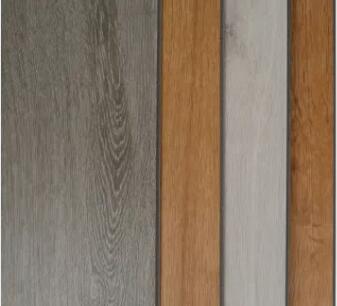Clearing the Air: Exploring Odors and Off-Gassing in Plastic Flooring
2023-12-13
Introduction:
The world of flooring has evolved, offering a multitude of options to suit diverse preferences and practical needs. Plastic flooring, encompassing materials such as vinyl, PVC, and laminate, has gained popularity for its versatility. However, concerns may arise regarding potential odors or off-gassing associated with these materials. In this blog, we'll delve into whether plastic flooring has any odor, the causes behind it, and how manufacturers address these concerns to create a comfortable and safe living environment.
Odor and Off-Gassing: Unveiling the Concerns
1. New Flooring Smell:
It's not uncommon for new plastic flooring to have a distinct odor when first installed. This is often referred to as the "new flooring smell" and is a result of the materials used in manufacturing. The smell is generally temporary and diminishes over time.
2. Off-Gassing:
Off-gassing refers to the release of volatile organic compounds (VOCs) into the air. VOCs are emitted as gases from certain materials, and exposure to high levels of VOCs can potentially contribute to indoor air quality concerns.
Addressing Odor and Off-Gassing:
1. Material Selection:
Manufacturers play a pivotal role in addressing odor and off-gassing by carefully selecting materials with low VOC emissions. High-quality plastic flooring is often designed to meet or exceed industry standards for indoor air quality.
2. Low-VOC Formulations:
Reputable manufacturers invest in research and development to create low-VOC formulations for their plastic flooring products. This commitment to reducing VOC emissions contributes to a healthier indoor environment.
3. Regulatory Compliance:
Manufacturers adhere to strict regulations and standards set by organizations such as the Environmental Protection Agency (EPA) and the FloorScore® program. Compliance with these standards ensures that flooring products meet specific criteria for indoor air quality.
4. Airing Out:
Airing out the space by allowing fresh air circulation is an effective way to reduce odors and expedite the dissipation of VOCs. This is especially beneficial during the initial installation period when the new flooring smell may be more pronounced.
5. Choosing Certified Products:
Consumers can make informed choices by selecting plastic flooring products that carry certifications indicating compliance with indoor air quality standards. Certifications such as FloorScore® or GREENGUARD ensure that the flooring meets stringent VOC emissions criteria.
6. Installation Guidelines:
Following the manufacturer's installation guidelines is crucial. Proper acclimation of the flooring before installation and using recommended adhesives and underlayments contribute to minimizing odor and off-gassing.
7. Ventilation Systems:
Adequate ventilation systems in homes and commercial spaces play a crucial role in mitigating the impact of odors and off-gassing. Ensuring good airflow helps disperse any emissions more rapidly.
8. Periodic Cleaning:
Regular cleaning and maintenance of the flooring contribute to a healthy indoor environment. Dust and debris can sometimes contribute to odors, so keeping the floor clean can minimize potential issues.
Conclusion:
While plastic flooring may have a temporary new flooring smell, reputable manufacturers address concerns related to odors and off-gassing by prioritizing low-VOC formulations and adhering to rigorous industry standards. By choosing certified products, following installation guidelines, and maintaining good indoor air quality practices, consumers can enjoy the benefits of plastic flooring without compromising the comfort and safety of their living spaces. As the industry continues to innovate, advancements in materials and manufacturing processes contribute to creating flooring solutions that prioritize both aesthetics and indoor air quality.



